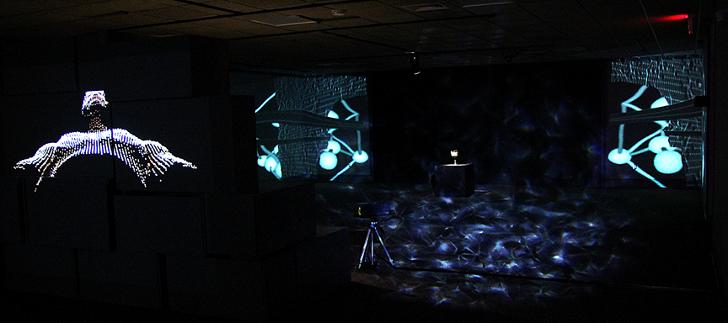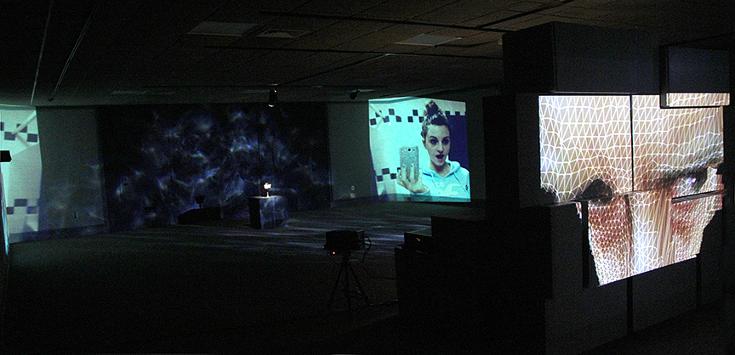Sirens' Song
The Greeks imagined the sirens as winged creatures. In this respect they bore a striking resemblance to the harpies. But where the harpies were a rather greedy and nasty lot, the sirens were a much more benign pair. According to Ovid, their singular purpose was to investigate and seek out, to search for something, and that something was Persephone, the goddess of nature, death and rebirth, who had been spirited away by Hades to the underworld. Ultimately, it’s not that important that the sirens were searching for the key to life, death and everything. The point that I want to latch onto is that their purpose was to look, search, and explore, hence the whole winged, birdlike thing. What really bears attention here is that for some curious reason, (the ancient chroniclers really never explain when or why), the sirens just stopped. By the time we encounter them in Homer the sirens have become a rather sad, lazy and perhaps even bitter pair, just hanging out on their island and whining, a lot. OK, it is sweet seductive whining- beautiful lamentation songs mostly. So maybe bitter is not exactly right. They really do seem more sad than angry. Broken. That’s the word for them. They have lost their sense of purpose and are completely disenchanted with the world.
This is how we find them when we meet them for the first time in the Odyssey. Unlike the later Roman and Romantic traditions that figure sirens as hyper-sexualized temptresses, in Homer’s Odyssey the appeal of the sirens is mental/intellectual not bodily/erotic. In Greek mythology the sirens do not lure sailors to death per se, but towards stasis, "…lapped both body and soul in fatal lethargy, the forerunner of death and corruption,” (classicist, Walter Copeland Perry). In Fagel’s translation of Homer the two unnamed sirens sing: “Once Odysseus hears (he) will sail on a wiser man. We know all the pains that the Greeks and Trojans once endured on the spreading plain of Troy when the gods willed it so- All that comes to pass on the fertile earth we know it all.“ It’s that last bit that is key to understanding Siren’s Song. The sirens became world-weary, disengaged and self-absorbed because they knew it all. In this respect they were no more evil than your average teenager. What made them particularly pernicious and dangerous is that they seduced others into thinking they knew it all too.

Sirens’ Song is a video installation about technology, but just so. I’m not interested in technology per se as much as I am in how technologies impact the ways we think and perceive. There already exists a human tendency to turn away from actively engaging the profound ambiguity, polysemia and richness of existence, reigning in this multiplicity by transforming the world into our own image. As Protagoras observed, “Man is the measure of all things.” Humans’ greatest triumphs, language, religion and science provide us with systems that help us to “measure” or explain the world, but these systems also grant us the power to explain it away. Rather than attempting to understand reality these systems often become our reality. Technologies simply amplify and accelerate our ability to indulge in the illusion that we know it all. Sirens’ song is about this seduction. It is a piece about the struggle to remain intellectually, and existentially curious and engaged with the world, resisting the concurrent totalizing pulls, the sirens’ songs, towards the very edges of the phenomenological. The human tendency is to turn away from engaging with the world toward the Punctum (a small point, a blind spot, the self) and the Grid (totalizing systems, science, religion), the terminal points that bracket lived experience. These two extremes, Punctum and Grid are the points at which the world disappears, transformed alternately into Image of the System, (Grid) or the Image of the Self, (Punctum).


Central to the installation is my version of a Greek kylix or eye cup. The kylix was a drinking vessel used during symposia. I found it a useful metaphor because while drinking from it, the cup is designed to provide the illusion of seeing while one raises it to the lips, a time when in fact, one is blind, and perhaps also well on the way to becoming blind drunk.

Synopsis:
The main video is divided into four sequences:
Siren’s Song- We are introduced to the sirens singing and lulling about in their jammies on their island.
The Punctum- 365 images of Instagram “selfies” (mobile phone self portraits) flash by, accelerate and transform into a giant eye into which the universe implodes and disappears.
The Grid- Again we encounter the sirens on their island. After passing through a cave with a spinning molecular model of diamond (reference to science and Plato’s famous metaphor of the cave.) We pass through the cave, are swallowed and disappear into the mouth of one of the singing sirens.
Kylix Rap- This final sequence provides a narrative exposition to help the viewer tie the various elements of the installation together. Rap music and the trope of the music video are combined with a vaulting choral climax to reference the sirens’ twin seductions of the Punctum (radical subjectivity/ self-absorption) and the System (radical objectivity/religion/science).
Sirens’ Rap Lyrics
Kick back, drink up
Drink from the eye cup.
You will see what you need to see.
Yourself as the fountain, as the center or as system,
The measure of all that there seems to be.
No longer looking, no longer alone,
God’s in your image, your image as home.
Don’t be look’n past your own horizon.
You ain’t there fool, so it don’t mean shit
The world is too big and strange and indifferent.
It will only make you strange and indifferent and small.
What meaning will you find there? What things will you witness,
That will not lead you right back to us all?
Right back here.
Back to this safe place.
Where so many find rest.
So drink from the eye cup.
And see, without seeing,
What should not be seen.

The entrance video is a self-portrait where I struggle with the seduction of the sirens, joining in their singing (badly!) and finally escaping (temporarily!) This video is on a fast two-minute loop to emphasize the ongoing nature of the struggle and the fleetingness of the escape.
The shadow “carousel” on the reverse side of the entrance video references Plato’s metaphor of the cave. In the center spins a molecular model (in this case it happens to be a model of nicotine). Around it orbit a bored Victorian child and a wooden teddy bear who hides his eyes, refusing to look.

Technical notes:
· Most of the footage for the videos was shot using a process called RBGD video. For me this involves shooting with a rig that combines a Canon 60D/Sigma EX 17-50mm F/2.8 lens with a Kinect depth sensor. Specialized software maps the color data onto the 3D depth information. Other software then allows you to re-photograph or re-visualize the original scene, virtually moving your camera through the space. For more info on the process: http://rgbdtoolkit.com
· Final video editing performed using Final Cut Pro X. Audio recorded using a Zoom H1 and Audio Technica AT897 microphone. Audio edited using Garage Band and Audacity. Final mix down in Final Cut.
· Most of the vocals are performed by myself and my two daughters, Lucy and Tallula, who also appear as the sirens. Choral vocals recorded at Rosary Cathedral, Toledo, with additional samples from Freesound.org.

